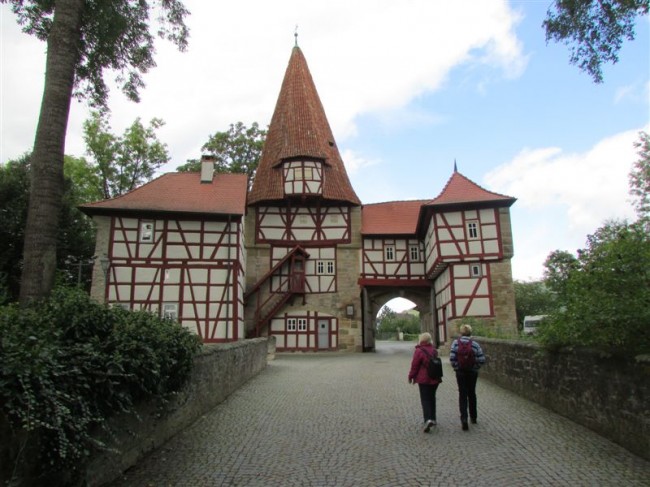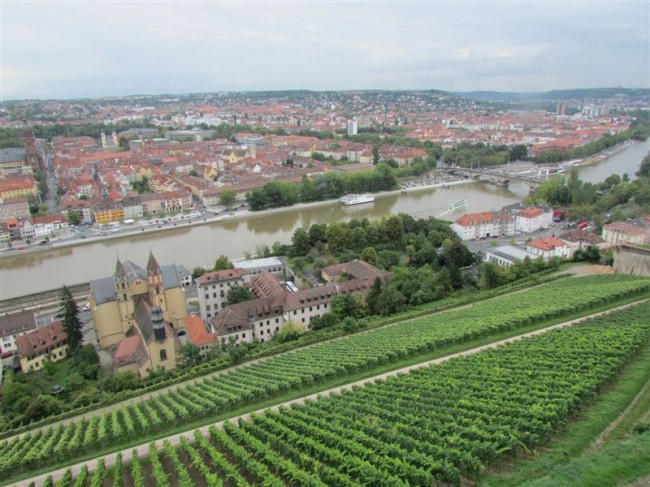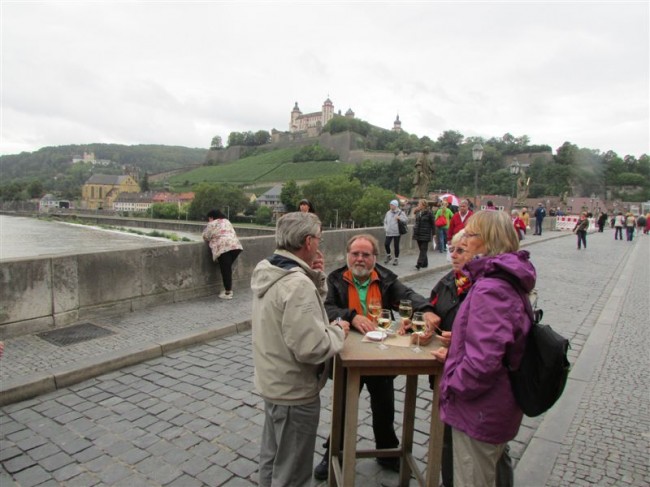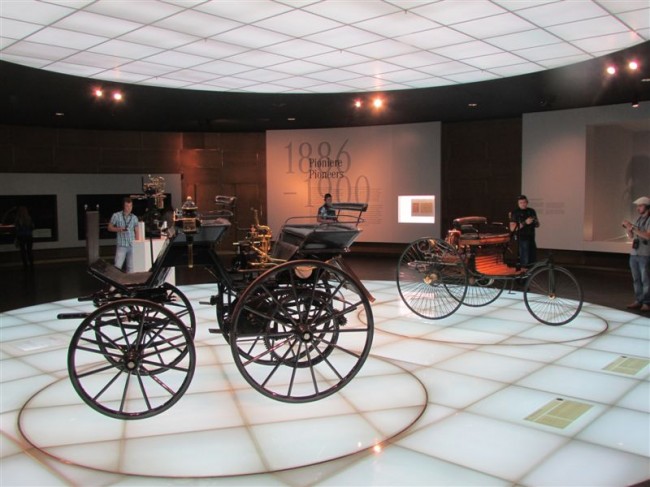North Americans are missing out on some extraordinary wines.
The sun-soaked hillsides of central Germany produce an astonishing variety of grapes, carefully turned into flavourful wines that are sold primarily in local markets. German staples like Riesling (often the only variety available in Canadian stores) are still plentiful but we discovered several little-known, quality wines with a fresh, fruity acidity that we’re convinced would be hits on this side of the Atlantic.
Most of Germany’s 13 wine regions are concentrated to the south of Frankfurt. The city’s busy airport is a great place to start a food and wine tour because the country’s efficient railway service includes a station within the airport and it’s easy to head in any direction via high speed rail.
Our triangular rail route, to the east and south of Frankfurt, took us first to Wurzburg and Iphofen in the Franconian wine region with its wide variety of mainly white grapes, then on to Heilbronn and Stuttgart in the Wurttemberg region where red wine grapes thrive especially well on the steep slopes of the Neckar River.
Wurzburg is a charming city of 140,000, located along the banks of the gently flowing Main River. Rolling hills and steep banks are filled with lush vineyards. Some Riesling is grown but the main varieties are Silvaner, the flagship wine of Franconian viticulture, and the widely-grown Muller-Thurgau. Often in a Trocken (dry) style, these local wines are extremely delicious and are usually sold in the distinctive bocksbeutel, a short-necked, round bottle.
Wurzburg was heavily fire-bombed towards the end of World War 2 and the interiors of many historic buildings were destroyed. But the central area of the massive Wurzburg Residence, a palace completed in 1744 and patterned after Versailles, was spared. A World Heritage Site since 1981, the building includes the world’s largest continuous ceiling fresco above the grand staircase and a vast, vaulted wine cellar in the basement.
Since the 13th Century, the prince-bishops of the area had been living in the Marienberg Fortress, high above the Main River, overlooking the Wurzburg city centre. Following the example of France’s Louis XIV, the powerful leaders decided that palatial living within the city was more prestigious. The Fortress is open to the public and offers stunning views of the city, its busy river cruise facilities and the surrounding vineyards.
We had our first German meal at the Weinhaus Schnabel in Wurzburg and, along with the amazing local wines, we enjoyed a traditional feast of sausage and sauerkraut, the best we’ve ever tasted.
From Wurzburg, it’s worth a side trip to the nearby Bavarian town of Iphofen. Spared from Allied bombing in the war, this medieval masterpiece (some call it “a pearl in the middle of nowhere”) is surrounded by a 13th century wall and a series of towers and gates that are completely preserved. On nearby hillsides we roamed through lush vineyards, many growing the Scheurebe grape (apparently it was Hitler’s favourite), that overlook the ancient town and, in the distance, the massive Knauf gypsum board plant.
We enjoyed lunch at the Restaurant Zehntkeller with its superb, sophisticated Franconian dishes accompanied by wine from its own vineyard. We sampled pumpkin soup with suckling pig jowls, roebuck steak with sea buckthorns and celery ravioli as well as wild catfish with baked veal compote. It was a gourmet lunch in every respect.
The next day a short (and efficient) train ride took us south to Heilbronn, a thriving city of 125,000 in the Wurttenberg wine district. With evidence of human habitation dating back 30,000 years, the city was almost totally destroyed by bombing in 1944. Now rebuilt and very modern looking (except for the restoration of some historic buildings like the Town Hall) the city is surrounded by vineyards and celebrates the fact with a lively wine festival – the Heilbronner Weindorf – every year.
For several days, the town centre is filled with locals and tourists milling around the wooden stalls built by a score of local vineyards to showcase the vast array of fine wines – from ultra-dry to very sweet – for which the region is famous. German food is also plentiful, from onion cake to Bretzels (the local version of pretzels) to massive sausage-in-a-bun, advertised as being “a half metre long”!
We also met a local guide near Heilbronn who took us on a long hike around the nearby vineyards where we were able to sample some outstanding sparkling secco and excellent red wines like Lemberger and Trollinger.
Our final stop was in the industrial city of Stuttgart, a pleasant 45 minute train ride from Heilbronn. Although there’s major construction all around the train station it’s easy to find tranquil areas because two-thirds of the land within the city limits is devoted to parks, gardens and woods.
About 60% of Stuttgart was leveled during the war, but careful reconstruction has restored many buildings including the palatial Altes Schloss, built originally in the 13th century and redone in the 16th century. Central Stuttgart also includes the state art gallery, the Staatsgalerie, with a fine collection including paintings by Picasso, Salvador Dali and Andy Warhol. There’s also a large selection of works by Edvard Munch (“The Scream”).
Fine wines are produced close to Stuttgart. We visited the stone-terraced vineyards of Karl Haidle and tasted its superb 2011 Lemberger, an intensely flavoured red from vines pruned to only six bunches of grapes.
Stuttgart is even better known for the superb automobiles produced in the area. The Mercedes-Benz Museum, adjacent to the sprawling car plant, is housed in a modern, round structure where visitors start at the top with the story of how Carl Benz and Gottlieb Daimler invented the automobile and then circle their way down to the modern era. Included are more than 160 vehicles including some of the oldest ever made (Benz was granted a patent for the internal combustion engine in 1879 and for the automobile in 1886).
Drinking and driving certainly don’t mix but any trip to central Germany should include visits to the splendid vineyards that cover much of the country and to the area where some of the world’s finest cars are produced.
Photo Credits
Photos by John and Sandra Nowlan – All Rights Reserved






Please Share Your Thoughts - Leave A Comment!